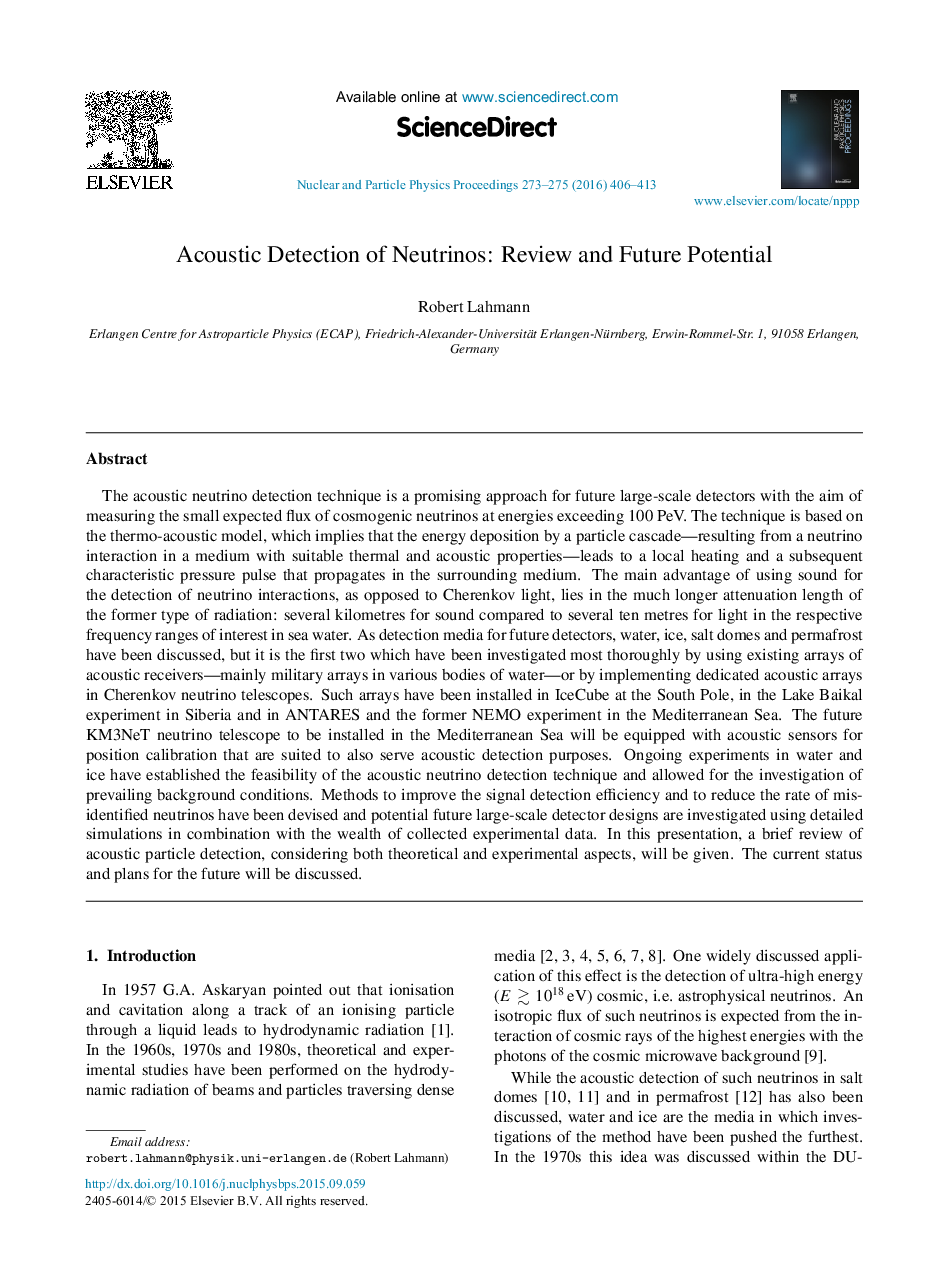| کد مقاله | کد نشریه | سال انتشار | مقاله انگلیسی | نسخه تمام متن |
|---|---|---|---|---|
| 1835375 | 1526772 | 2016 | 8 صفحه PDF | دانلود رایگان |
The acoustic neutrino detection technique is a promising approach for future large-scale detectors with the aim of measuring the small expected flux of cosmogenic neutrinos at energies exceeding 100 PeV. The technique is based on the thermo-acoustic model, which implies that the energy deposition by a particle cascade—resulting from a neutrino interaction in a medium with suitable thermal and acoustic properties—leads to a local heating and a subsequent characteristic pressure pulse that propagates in the surrounding medium. The main advantage of using sound for the detection of neutrino interactions, as opposed to Cherenkov light, lies in the much longer attenuation length of the former type of radiation: several kilometres for sound compared to several ten metres for light in the respective frequency ranges of interest in sea water. As detection media for future detectors, water, ice, salt domes and permafrost have been discussed, but it is the first two which have been investigated most thoroughly by using existing arrays of acoustic receivers—mainly military arrays in various bodies of water—or by implementing dedicated acoustic arrays in Cherenkov neutrino telescopes. Such arrays have been installed in IceCube at the South Pole, in the Lake Baikal experiment in Siberia and in ANTARES and the former NEMO experiment in the Mediterranean Sea. The future KM3NeT neutrino telescope to be installed in the Mediterranean Sea will be equipped with acoustic sensors for position calibration that are suited to also serve acoustic detection purposes. Ongoing experiments in water and ice have established the feasibility of the acoustic neutrino detection technique and allowed for the investigation of prevailing background conditions. Methods to improve the signal detection efficiency and to reduce the rate of misidentified neutrinos have been devised and potential future large-scale detector designs are investigated using detailed simulations in combination with the wealth of collected experimental data. In this presentation, a brief review of acoustic particle detection, considering both theoretical and experimental aspects, will be given. The current status and plans for the future will be discussed.
Journal: Nuclear and Particle Physics Proceedings - Volumes 273–275, April–June 2016, Pages 406–413
